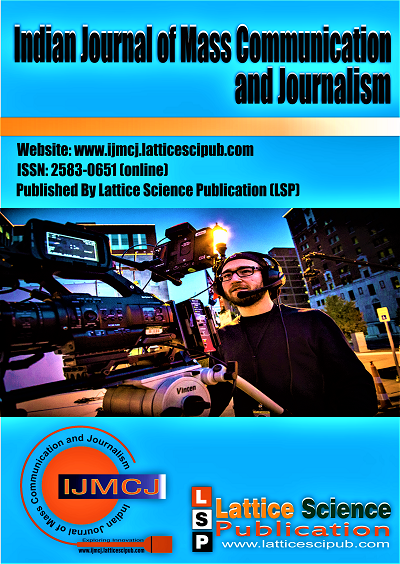Representation of Therapy and Therapists in Indian Movies and TV Series: An Examination of Accuracy, Influence, and Perception
Main Article Content
Abstract
Film and psychology share a longstanding relationship with evolving depictions of therapy and therapists. While extensive research explores Hollywood's portrayal of mental health, a gap exists in understanding therapists in Indian media. This study addresses this void, examining how Indian movies and TV series portray therapists and their impact on audiences. Utilizing qualitative methodology, expert interviews provide insights into therapist perspectives. Bollywood often simplifies mental health, while regional cinema offers more authentic representations. Critiques target films like 'Dear Zindagi,' 'Atrangi Re,' and Tamil movies 'Beast' and 'Anniyan,' as well as the series 'The Family Man' for unrealistic therapy scenes. Positive examples include Tamil andMalayalam films like 'Kumbalangi Nights' and 'Irugapatru,' and the series 'Made in Heaven' for ethical therapist portrayals. Indian media tends to trivialize therapy, perpetuating misconceptions, and stigma. Experts stress the importance of responsible depictions, even in extreme treatments like Electroconvulsive Therapy (ECT). Therapists face challenges addressing misconceptions fuelled by media portrayals during sessions, underscoring the need for accurate and empathetic representations in Indian media.
Downloads
Article Details

This work is licensed under a Creative Commons Attribution-NonCommercial-NoDerivatives 4.0 International License.
How to Cite
References
Beachum, L. (n.d.). The Psychopathology of Cinema: How Mental Illness and Psychotherapy are Portrayed in Film.
Hsu, C.-C., & Sandford, B. A. (n.d.). The Delphi Technique: Making Sense of Consensus. https://doi.org/10.7275/PDZ9-TH90
Orchowski, L. M., Spickard, B. A., & McNamara, J. R. (2006). Cinema and the valuing of psychotherapy: Implications for clinical practice. Professional Psychology: Research and Practice, 37(5), 506–514. https://doi.org/10.1037/0735-7028.37.5.506
Taylor, S. J., Bogdan, R., & DeVault, M. (2015). Introduction to qualitative research methods: A Guidebook and Resource. John Wiley & Sons.
Young, S. D., Boester, A., Whitt, M. T., & Stevens, M. (2008). Character Motivations in the Representation of Mental Health Professionals in Popular Film. Mass Communication and Society, 11(1), 82–99. https://doi.org/10.1080/15205430701597775
Thankachan, N. (2023). The Influence of Lacanian Jouissance on K. G. George Movies. In Indian Journal of Mass Communication and Journalism (Vol. 3, Issue 2, pp. 26–31). https://doi.org/10.54105/ijmcj.b1064.123223
Pillai, A. R. (2019). Chronicles of Cognitive and Emotional Development on the Move: A Critical Exploration of Linklater’s Boyhood as a Road Movie. In International Journal of Innovative Technology and Exploring Engineering (Vol. 9, Issue 2, pp. 5003–5006). https://doi.org/10.35940/ijitee.b6648.129219
Ikboljon, M., & Tirkashaliyevich, K. S. (2019). Creative Researches of Young Cameramen on the Creation of Graphic Image in Modern Uzbek Feature Films. In International Journal of Engineering and Advanced Technology (Vol. 9, Issue 1, pp. 5230–5236). https://doi.org/10.35940/ijeat.a2948.109119
Joshi, S. C., Gupta, K., & Manektala, S. (2022). Misinformation, Public Opinion, and the Role of Critical Thinking. In International Journal of Management and Humanities (Vol. 8, Issue 9, pp. 15–18). https://doi.org/10.35940/ijmh.i1483.058922
Kulkarni, C., Manuja, Dr. M., & Suchithra, Dr. R. (2020). Automatic Intelligent Movie Sentiment Analysis Model Creation for Box Office Prediction using Multiview Light Semi Supervised Convolution Neural Network. In International Journal of Recent Technology and Engineering (IJRTE) (Vol. 9, Issue 4, pp. 260–266). https://doi.org/10.35940/ijrte.d4957.119420





